When dawn broke on Jan. 8, 1998, every bush, branch and blade of grass was sheathed in ice. Trees bowed under the weight of the ice and snapping limbs echoed like rifle shots across Maine.
Downed power lines and trees littered roads coated in sheets of ice. And thousands of Mainers began their first of many days without power.
Twenty years later, the ice storm of 1998 still stands among Maine’s greatest natural disasters. More than half of the state’s population lost power, some for more than two weeks. All 16 counties were declared federal disaster areas and 11 million acres of forest were affected. In total, the storm cost the state $320 million and led to at least four deaths.
In communities across the state, neighbors banded together to keep warm, clean up fallen limbs and cheer the utility crews that arrived to restore power.
“It was an extraordinary coming together. It really was the best of Maine in the sense of people reaching out to one another,” said Sen. Angus King, who was governor in 1998. “I always tell people in Washington that Maine is a big small town with long streets. This was the best example of that.”
It was Jan. 6, 1998, when the National Weather Service warned Mainers to ready themselves for a major ice storm. Rain fell for the next two days, freezing into a heavy layer of ice up to 3 inches thick. By Jan. 8, a Thursday, Mainers began to lose power. Entire towns from the southern border to Washington County suddenly went dark.
Eric Sinsabaugh, a National Weather Service meteorologist who has worked at the Gray office since 1998, said, despite the name, the 1998 ice storm wasn’t actually one big storm, but a prolonged weather event with very cold surface temperatures and warmer air above. For the first time in recent memory, it was warmer at the top of Mount Washington than at the bottom. Precipitation fell as rain and froze as it hit the ground, trees and power lines.
“What made this storm so damaging was the fact that it was a continuous light rain,” Sinsabaugh said. “We had seen ice storms before, but nothing of that prolonged nature. That was by far the worst ice storm I’ve seen in my 22 years here. I’m still trying to forget it.”
The ice storm of 1998: a timeline
The ice proved too much for the power lines and poles that crisscross the state. At the height of the storm, 275,000 CMP customers had no power, though more than 600,000 people across the state lost power at some point during the storm. Many had no water, heat or telephone. It wasn’t until a wind and rainstorm in October 2017 that a weather event would knock out electricity to more Mainers.
“It started and it just didn’t end,” Gail Rice, a spokeswoman for CMP, said of the 1998 storm. “It was three solid days of light freezing rain.”
There wasn’t a single part of the CMP coverage area unaffected by the weather, but certain locations – from western York County up to Androscoggin County and over to central Maine – were particularly hard hit.
“We knew a storm was coming and people were prepared, but no one knew how much ice was going to come,” said April Caron, a business development manager for the American Red Cross who lived in Sanford at the time. “If you didn’t have to be anywhere, it really was beautiful. It almost looked like everything was coated in crystal.”
‘I REALIZED … WE WERE IN DANGER’
By Jan. 8, King had lost power at his home in Brunswick, but that was among the least of his concerns given the unprecedented storm, damage across the state and temperatures that were expected to start dropping.
“I realized to my horror that we were in danger,” he said in an interview last week. “This was life-threatening.”
King called on the National Guard for help, made contact with utility companies to see what support they needed and started making phone calls. He talked to emergency management officials and arranged to get cots to temporary shelters. He and his 7-year-old son, Ben, headed out to talk to Mainers stranded in the dark with no heat or water. They stopped at a doughnut shop in Brunswick and bought every baked good on the shelf to hand out at a shelter.
With freezing temperatures on the way and hundreds of thousands of Mainers without heat, the American Red Cross and other organizations set up a network of shelters that provided meals, beds and heat. Maine General Medical Center became an impromptu emergency shelter for frail senior citizens and others with health problems and no heat. In Bridgton, a nursing home opened its doors because there was no shelter in town and people needed a place to stay warm.
The Red Cross and other organizations opened more than 130 shelters and warming stations in the week after the storm to help 4,000 people. Red Cross trucks delivered food to neighborhoods where residents were stranded. Despite the stress of being away from home, people stayed positive and focused on helping their neighbors, Caron said.
“People were so willing to help each other,” she said. “In the shelter, someone may have it bad, but someone next to them had it worse.”
IMPROMPTU NEIGHBORHOOD BBQS
In some towns, people dragged out their grills, emptied their freezers and had neighborhood barbecues. Newspapers shared printing facilities with competitors and radio stations held simulcasts. Four Portland-area television stations collaborated to raise money for the Red Cross. In Bangor, the radio station WVOM became a clearing house for people who needed water, firewood or someone to check on a relative.
Listen to Gov. King’s 1998 State of the State address:
On Jan. 15, Vice President Al Gore arrived to tour the damage and told Mainers “you need to know you’re not alone.” He and King drove first to Auburn to look at piles of twisted poles and lines littering the roads. They rode in a helicopter over Down East Maine, where a major transmission line from Bangor to Washington County was heavily damaged.
“It looked like a giant had walked along and just crushed it,” King said.
On his way out of Maine, Gore asked King if he needed anything. King had one request: get utility crews from North Carolina to Maine as soon as possible. Fifteen hours later, massive military cargo planes landed in Brunswick, the doors opened and crews drove their bucket trucks onto the tarmac.
“It was like the cavalry arriving,” King said. “There were all these guys from North Carolina in skimpy little jackets. LL Bean gave us parkas for those guys.”
‘SO MUCH DAMAGE OUT THERE’
Those utility workers from North Carolina joined crews from other states that headed to Maine to help get the power back on. The storm caused some $81 million in damage to the state’s electrical utility system.
“We knew right away that restoration was going to take awhile,” said Rice, the CMP spokeswoman. “The was so much damage out there.”
At the company’s office in Augusta, it was all-hands-on-deck for day after day as employees filled in wherever they could and worked through momentary power interruptions. A childcare center was set up in the office where employees’ older children looked after the youngest kids. Employees scrambled to find warm clothing, food and hotel rooms for crews. National Guardsmen rode along with out-of-state crews to help them navigate the roads.
Everywhere the linemen went, they were greeted by Mainers thankful to see the bucket trucks turn down their streets. They put signs in their yards – some saying they didn’t have power, others thanking utility workers for their help. At restaurants, diners stood to give standing ovations to linemen who stopped in for food.
“The out-of-state linemen who came up here were astonished at the reaction of Maine people. I remember one of them saying ‘If the power is out (at home), people swear at us.’ Up here, people came out of their houses with coffee and doughnuts,” King said. “The next summer, we had a lobster feed in front of the State House for all of the out-of-state people. Hundreds of them came back.”
‘THE FOREST BOUNCES BACK’
The ice storm of 1998 led to changes in how CMP responds to major weather events, Rice said. Twenty years ago, the company had to individually call other utility companies for help. Now, one request to a network of utility companies that stretches west to Ohio and south to Virginia brings immediate help. CMP keeps pre-assembled storm packs of special repair equipment on hand and all CMP employees are cross-trained in multiple positions. Social media allows the company to get messages directly to customers and the media more easily.
Signs of the ice storm still linger in Maine’s forests, where 11 million acres were affected and about $28 million in damage was reported. About half of those 11 million acres were moderately to severely impacted, with more than half of branches broken off.
“You can still see trees that have broken branches in the upper crowns,” said Aaron Bergdahl, a forest pathologist with the Maine Forest Service.
Bergdahl said trees that were broken are more susceptible to rot fungi. Surveys done after the ice storm showed that fungal rot infections moved at a rate of about a foot per year. Many damaged trees were further damaged by beetle infestations.
“The forests of Maine are healthy and therefore resilient,” Bergdahl said. “Even when something as catastrophic as the ice storm of 1998 happens, the forest bounces back.”
Nearly a month after the storm hit – and just days after power was restored to the last customers – King talked about the response to the ice storm in his State of the State address. His guests for the evening included linemen, volunteers and others who pitched in to help their neighbors.
“Maine was being put to the test,” King said in his address. “And then, something else happened, not so silently this time: a wonderful, transcendent, once-in-a-lifetime thing – in coffee shops and shelters, in kitchens and in neighbors’ spare rooms, on the radio and in churches Sunday morning – we rediscovered who we are, or most want to be, as people. Ingenious, self-reliant, neighborly, creative, tough, funny, spontaneous, caring.”
Send questions/comments to the editors.


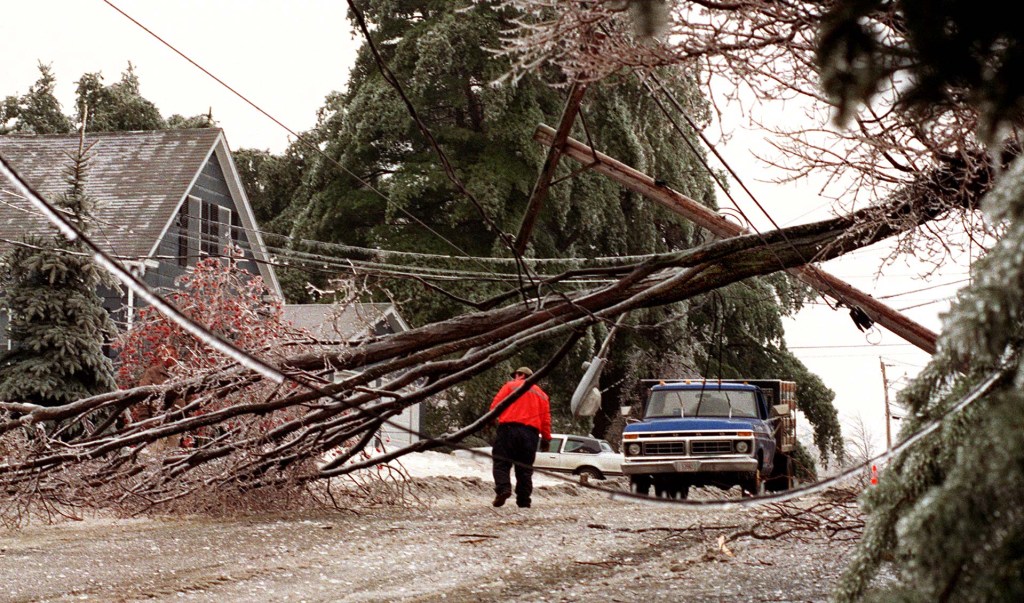
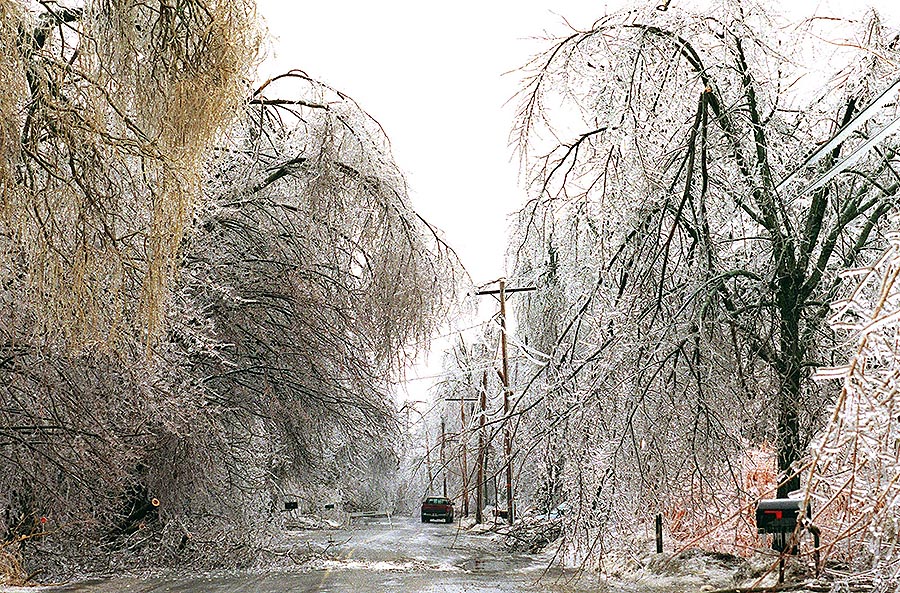
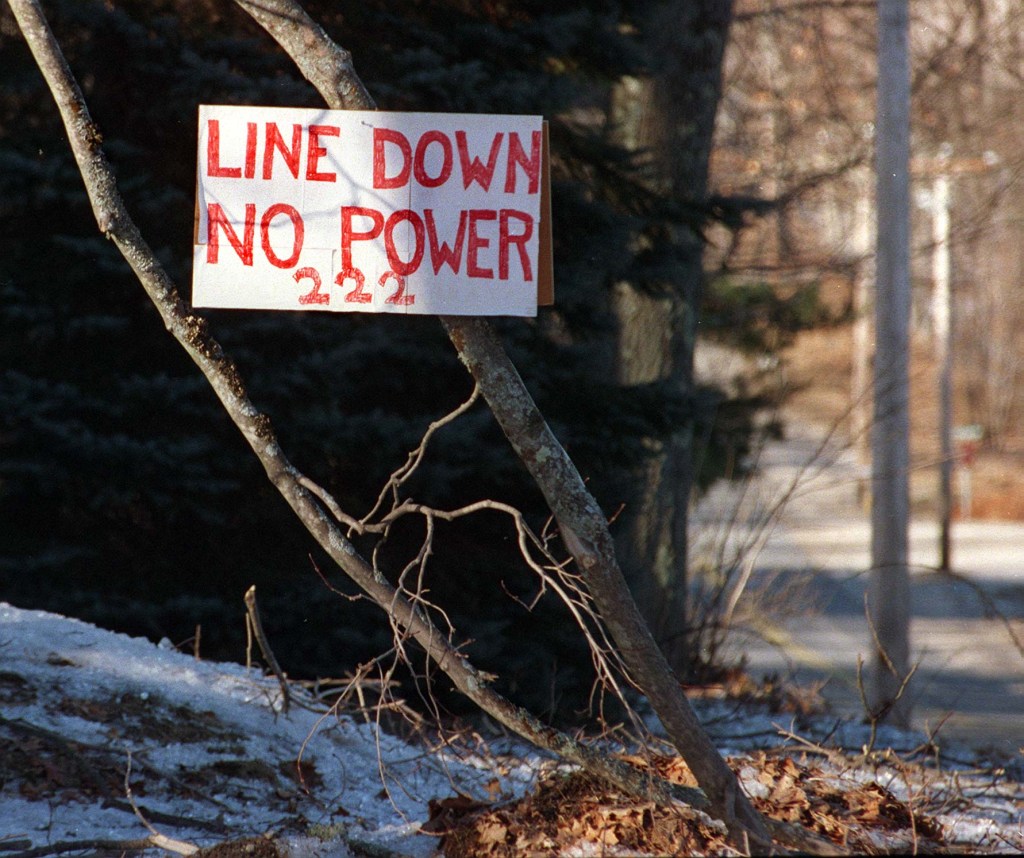
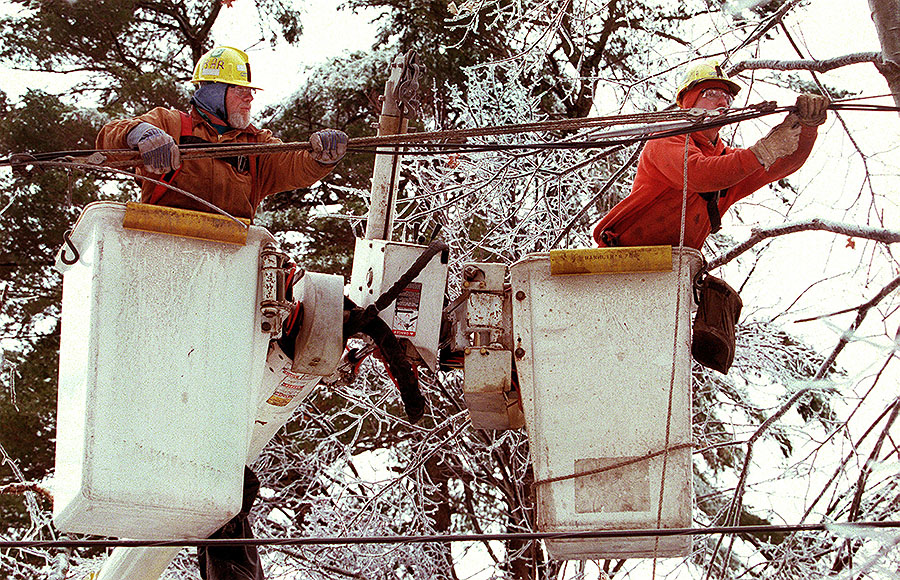
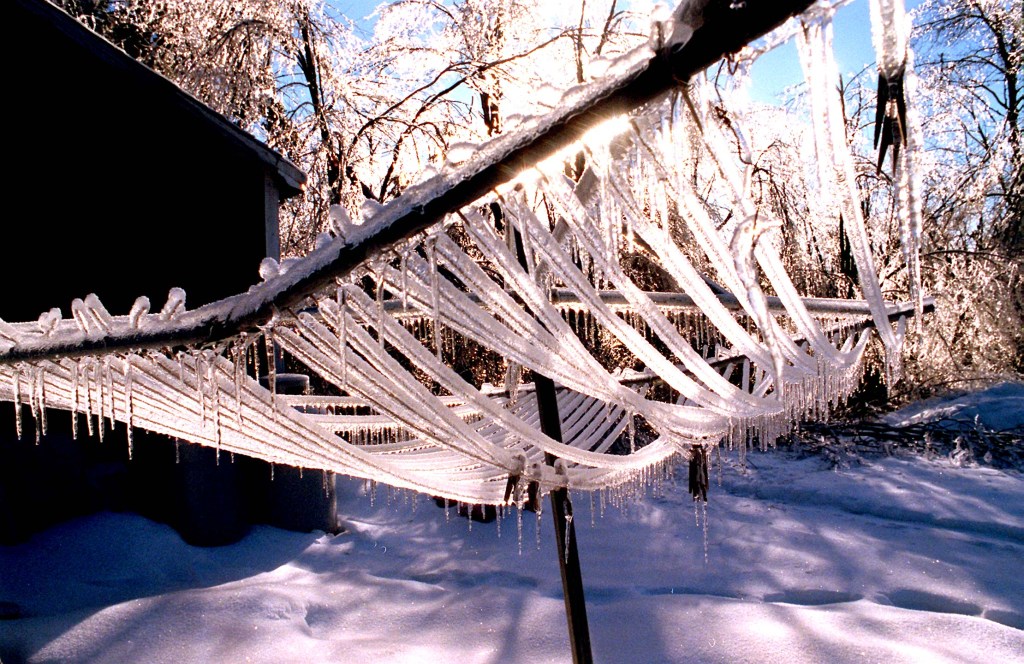
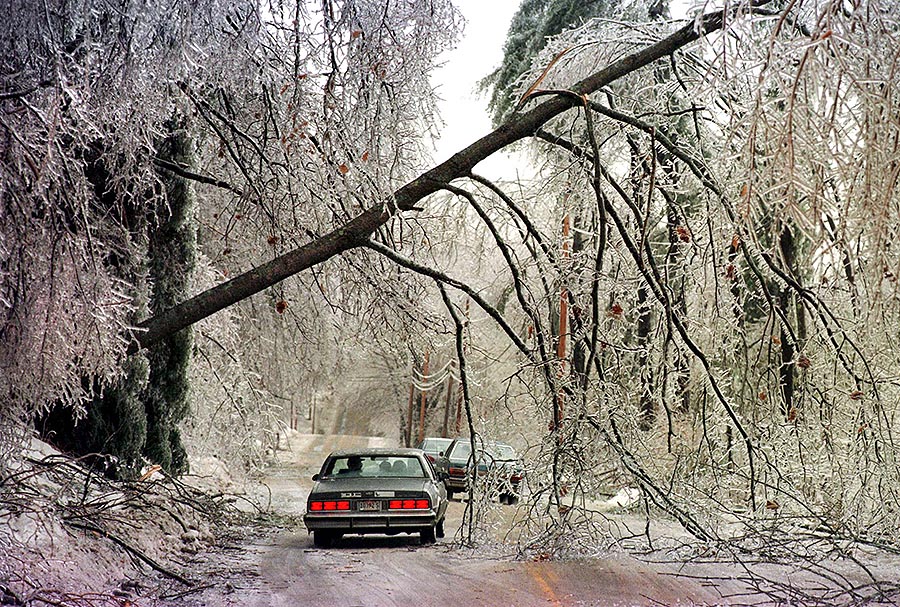
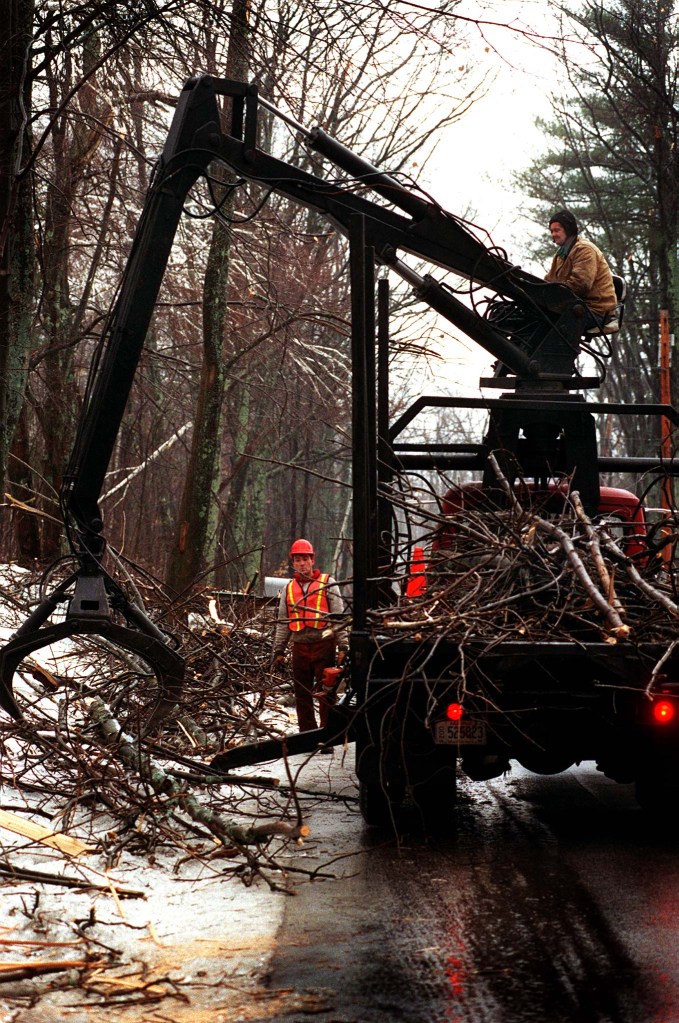
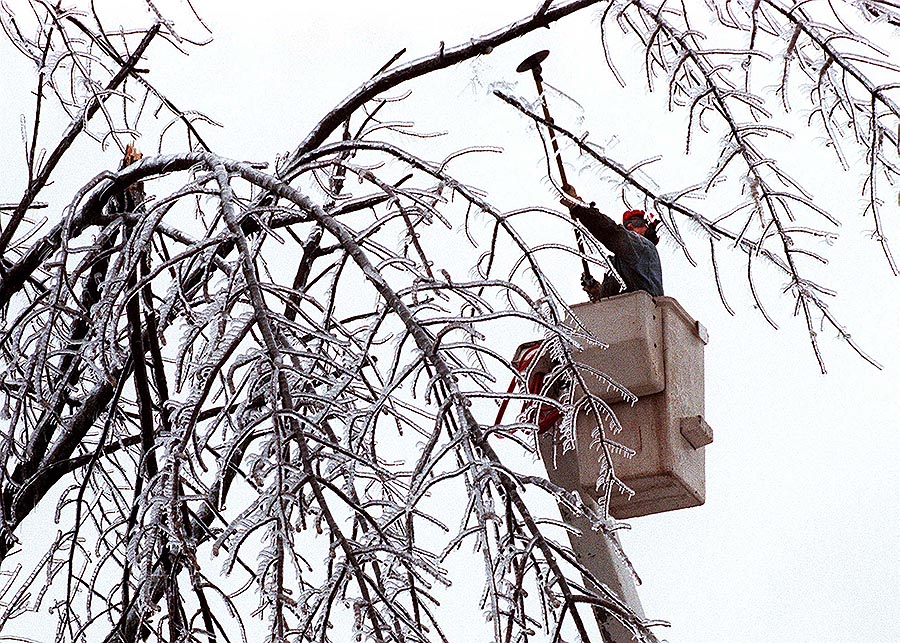
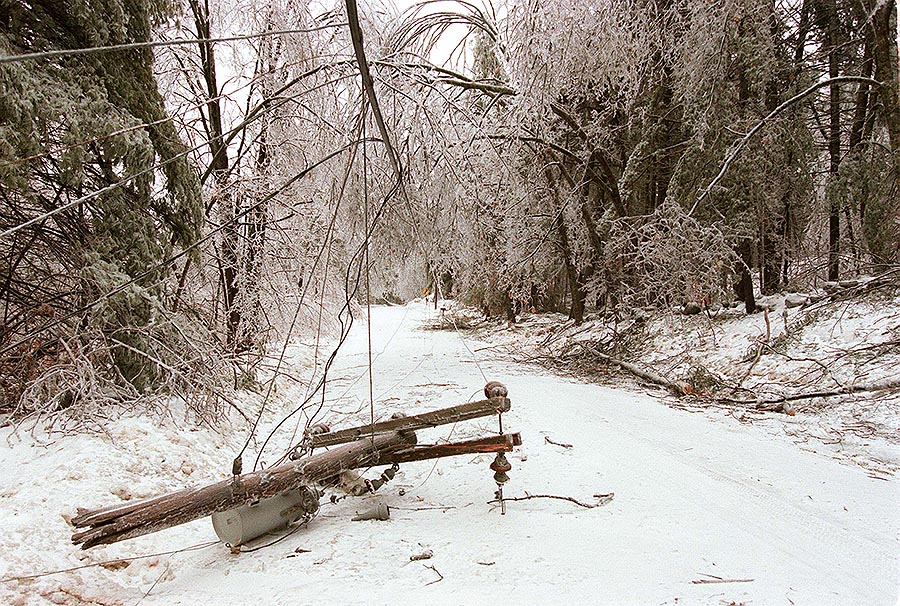

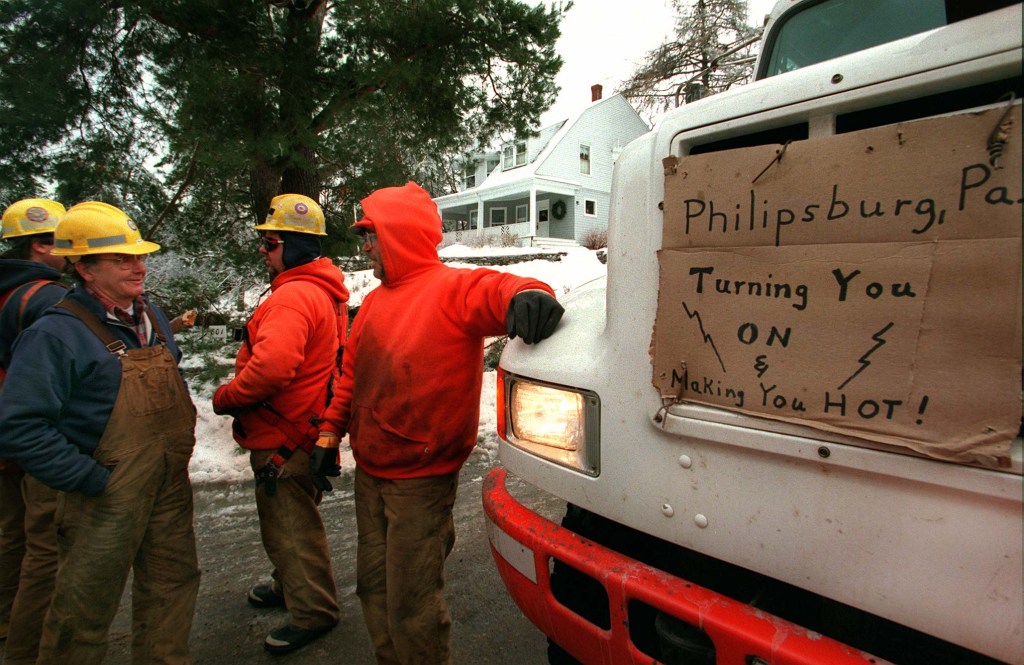
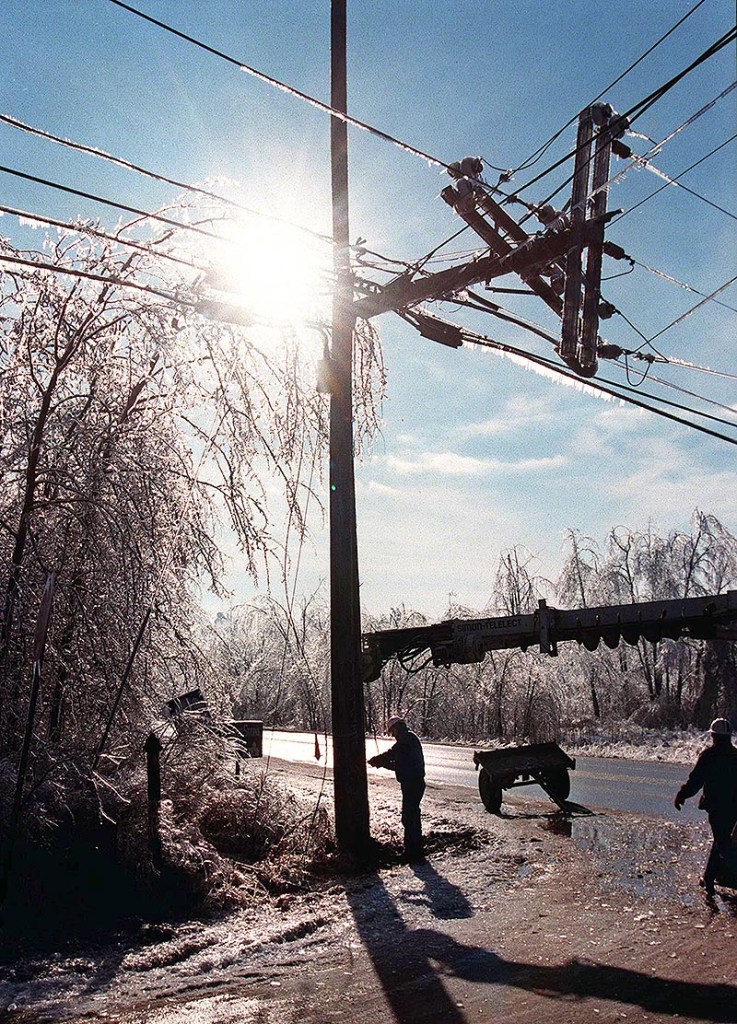

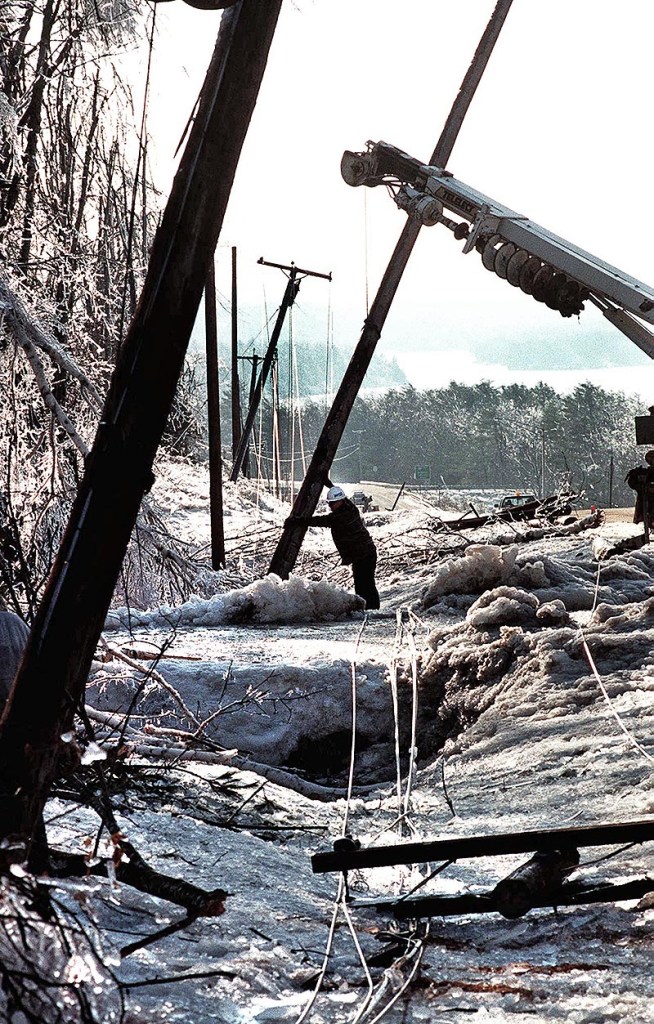
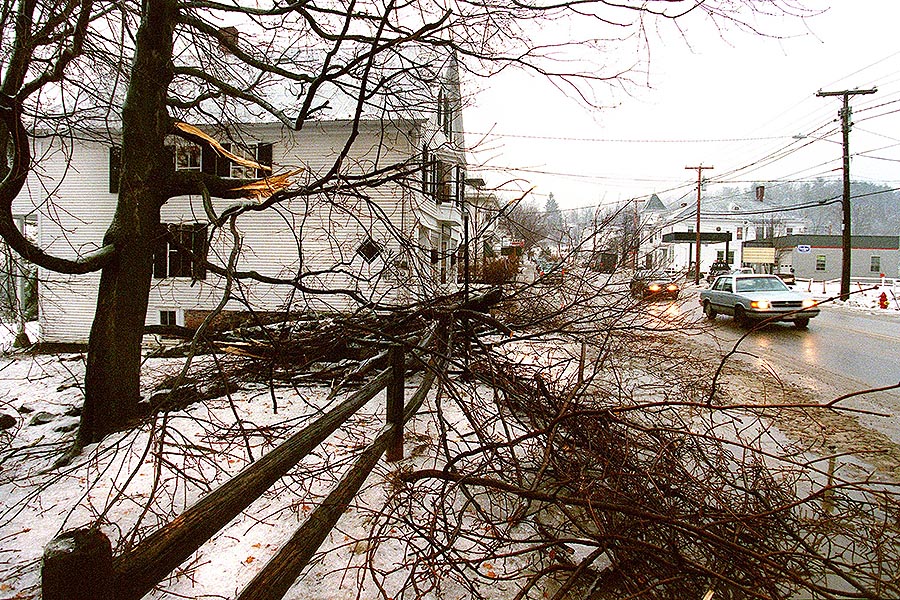
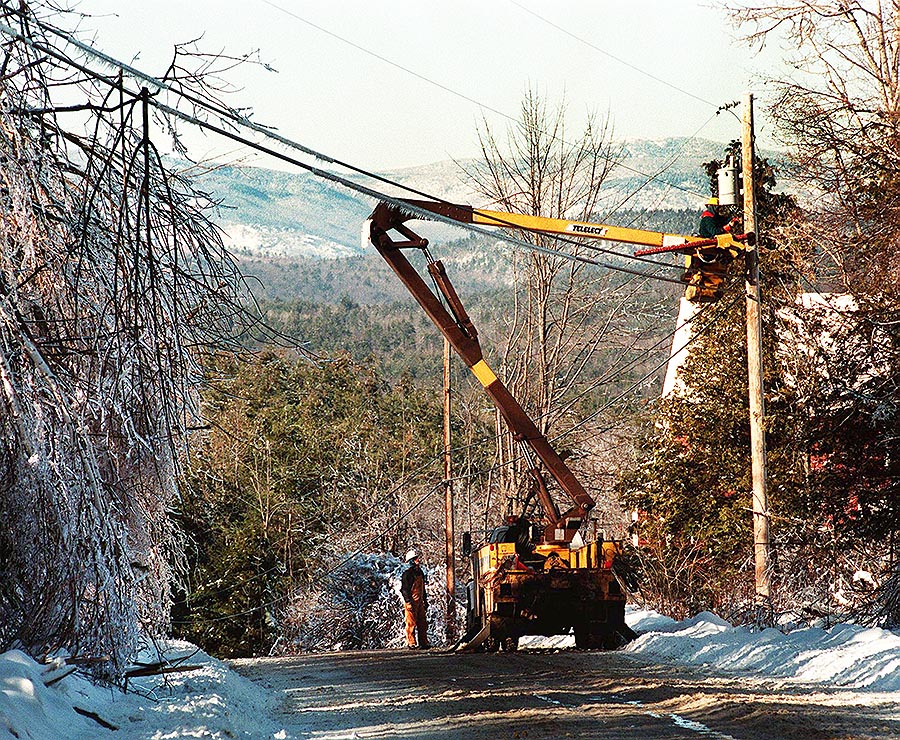
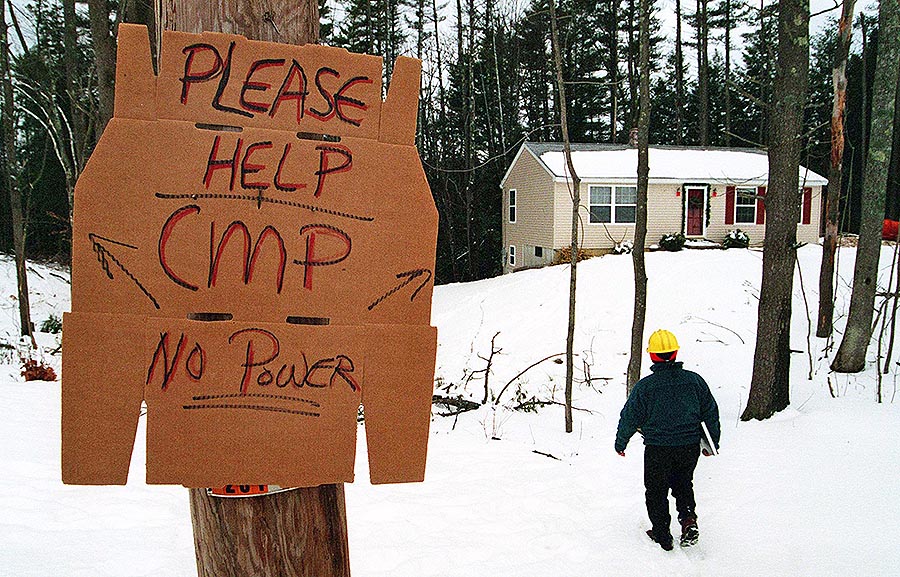
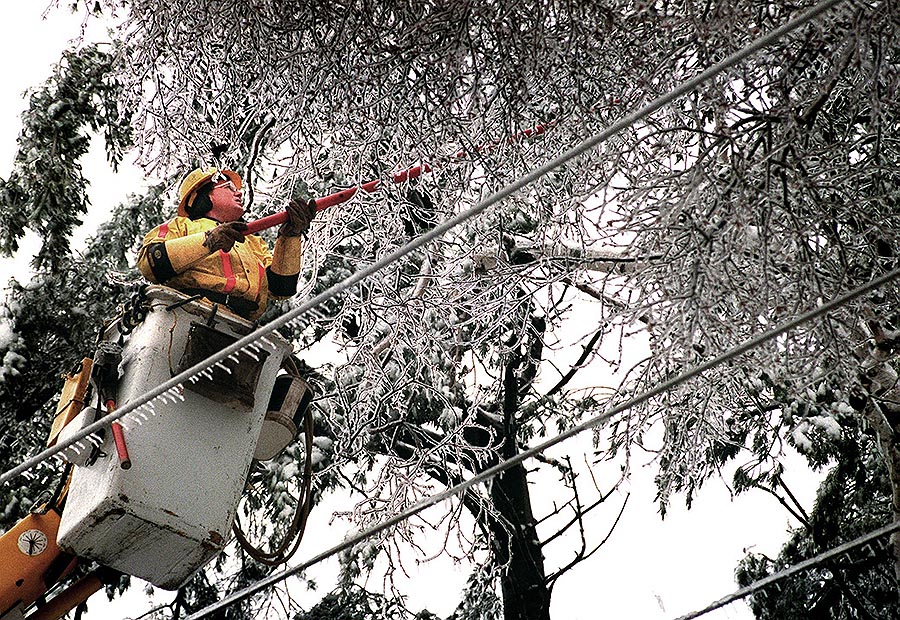
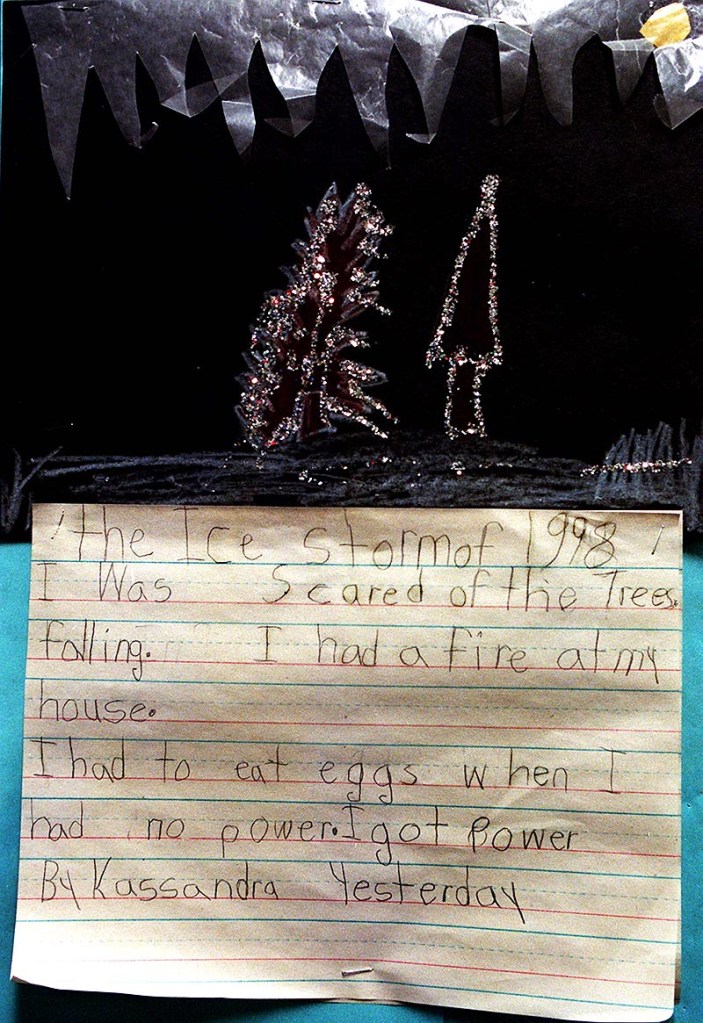
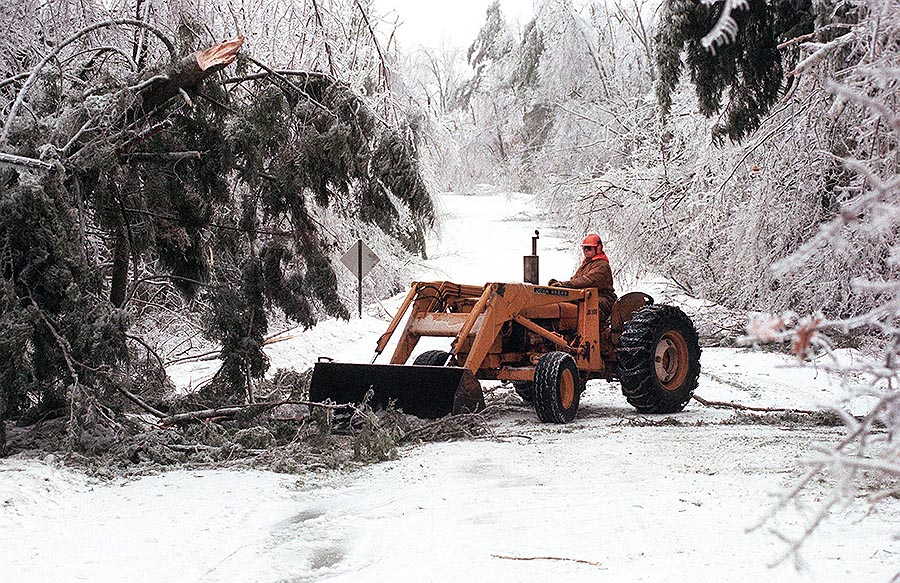
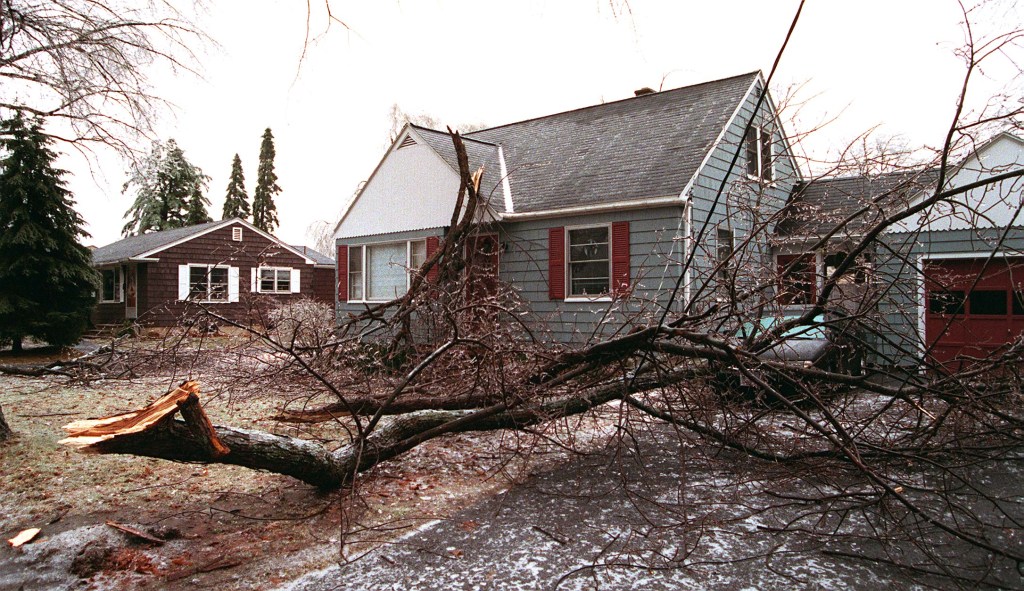
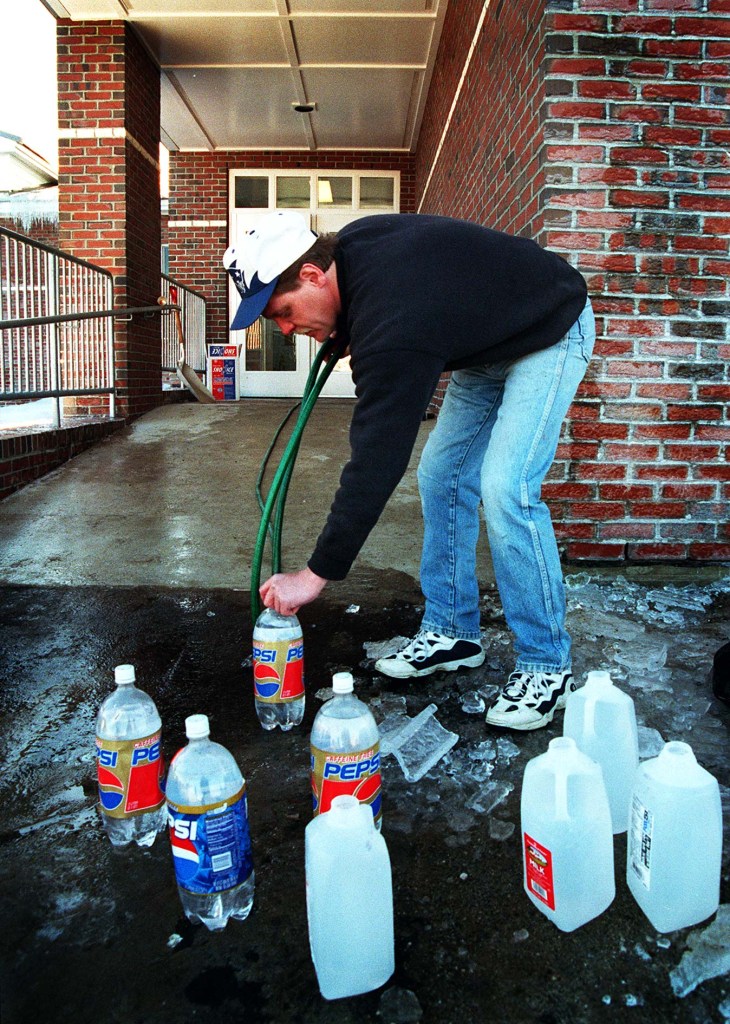
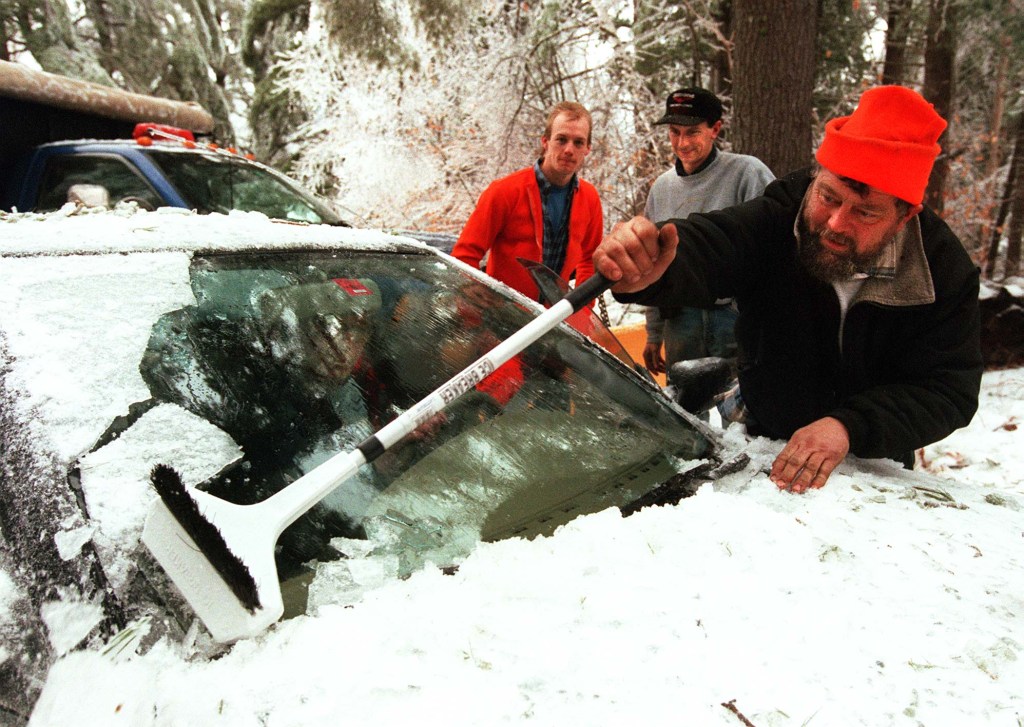

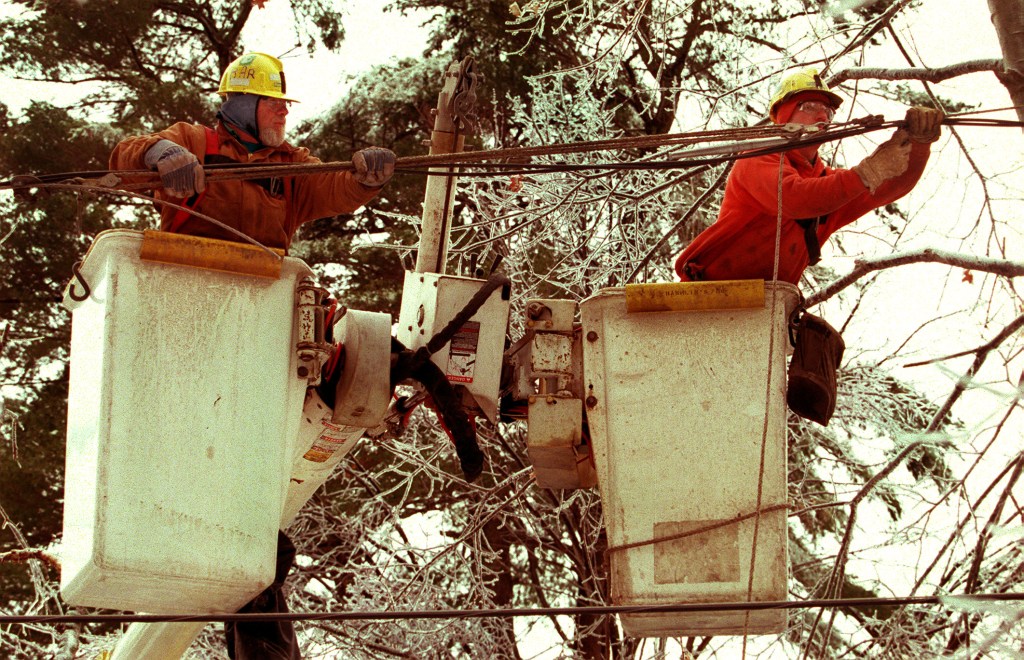
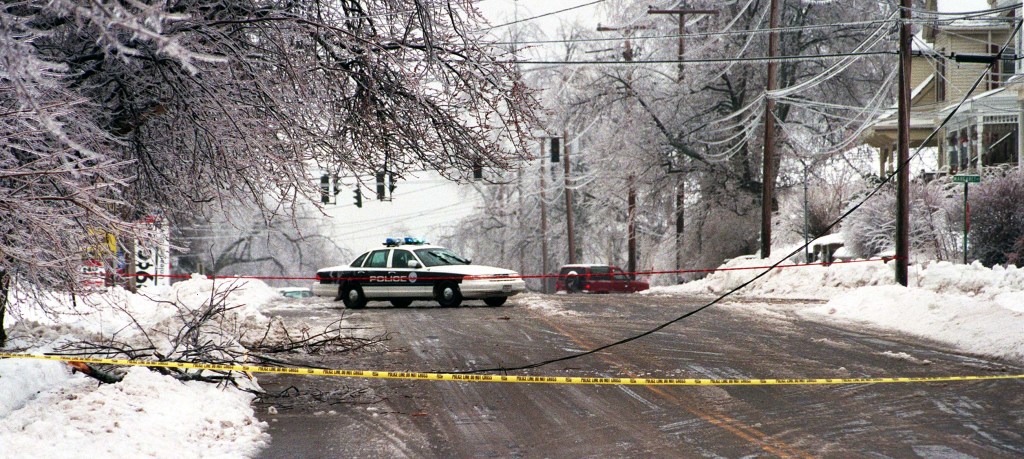
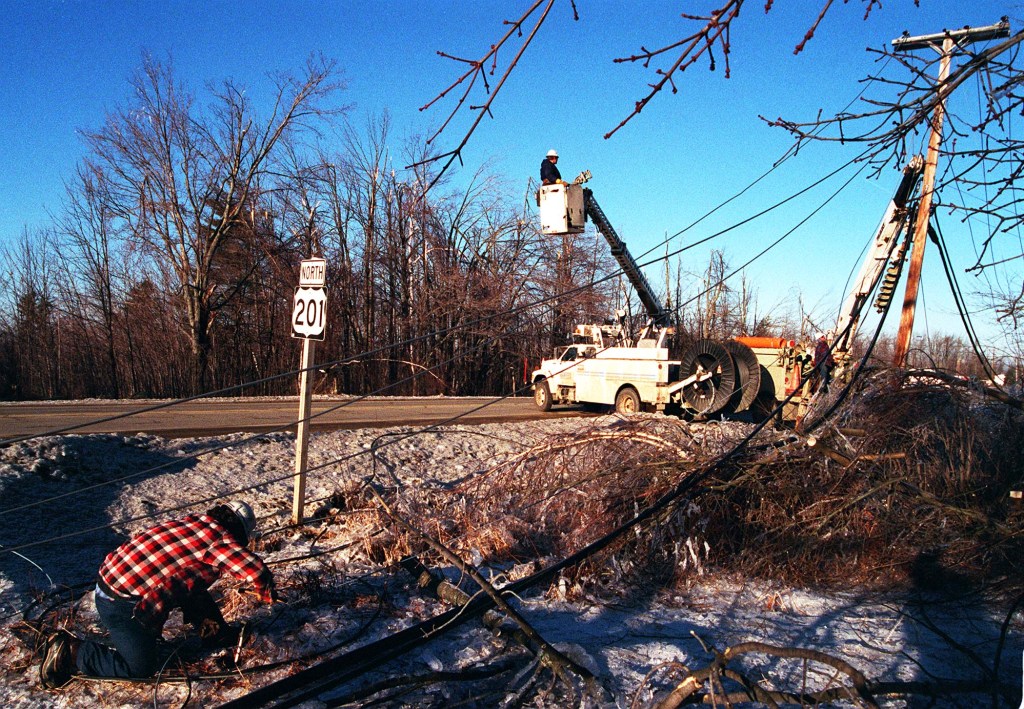
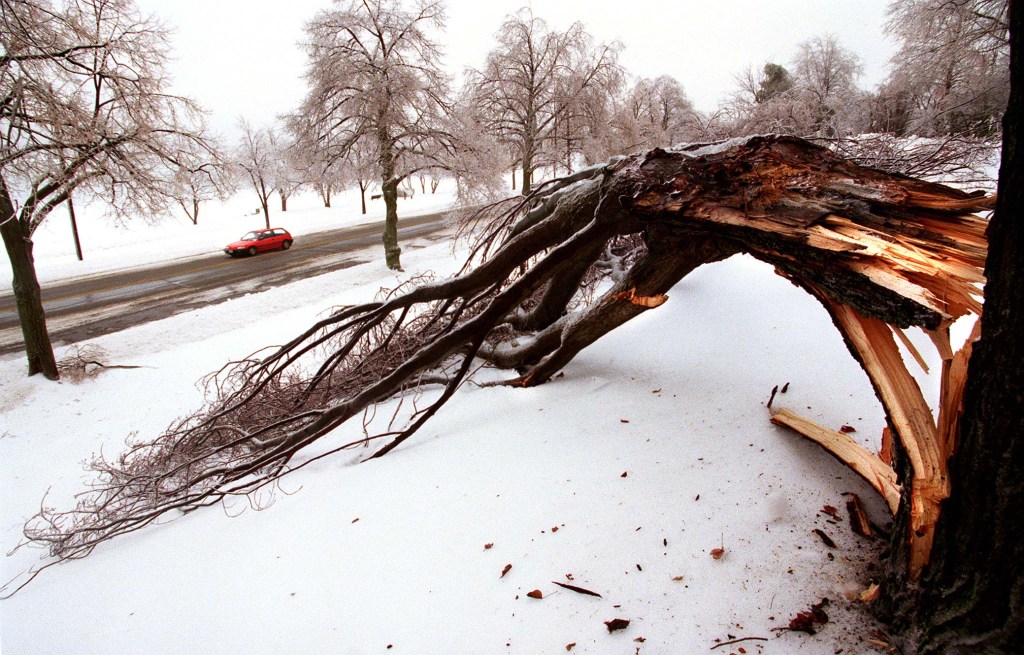
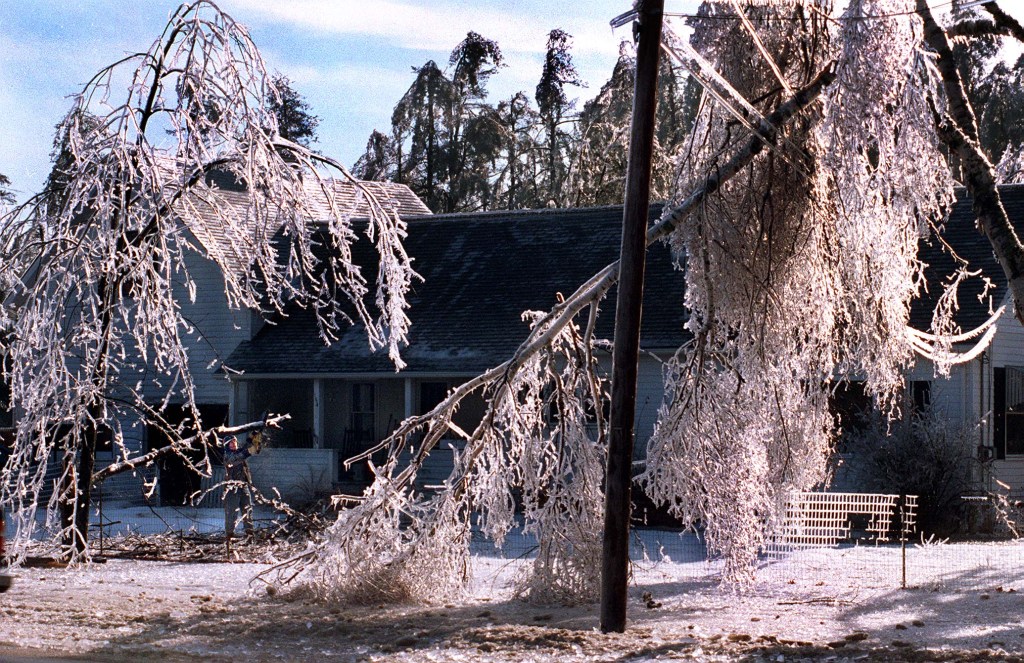
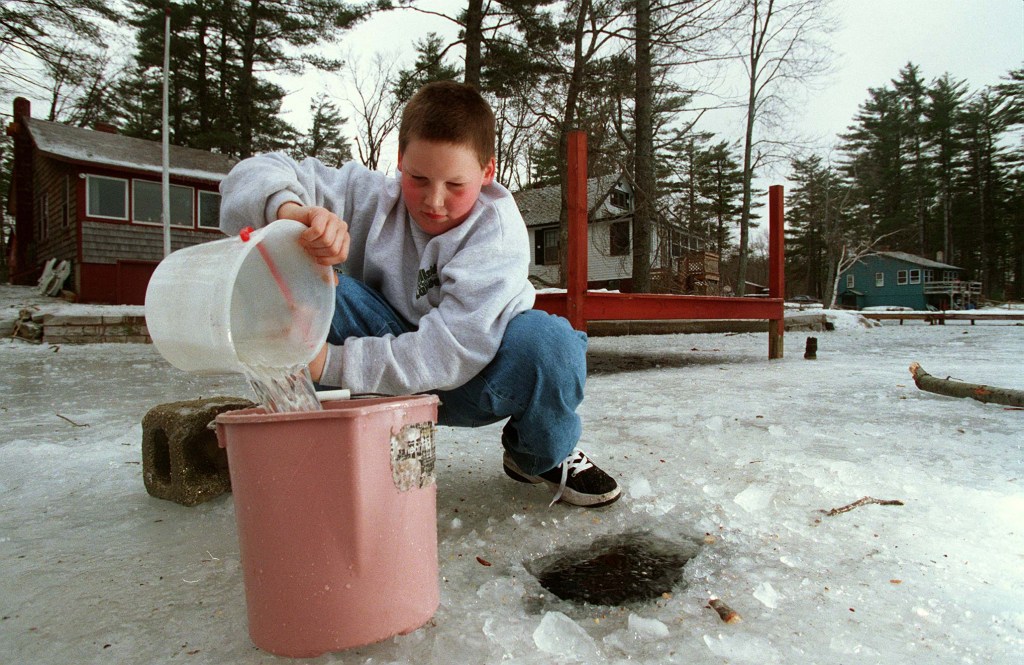
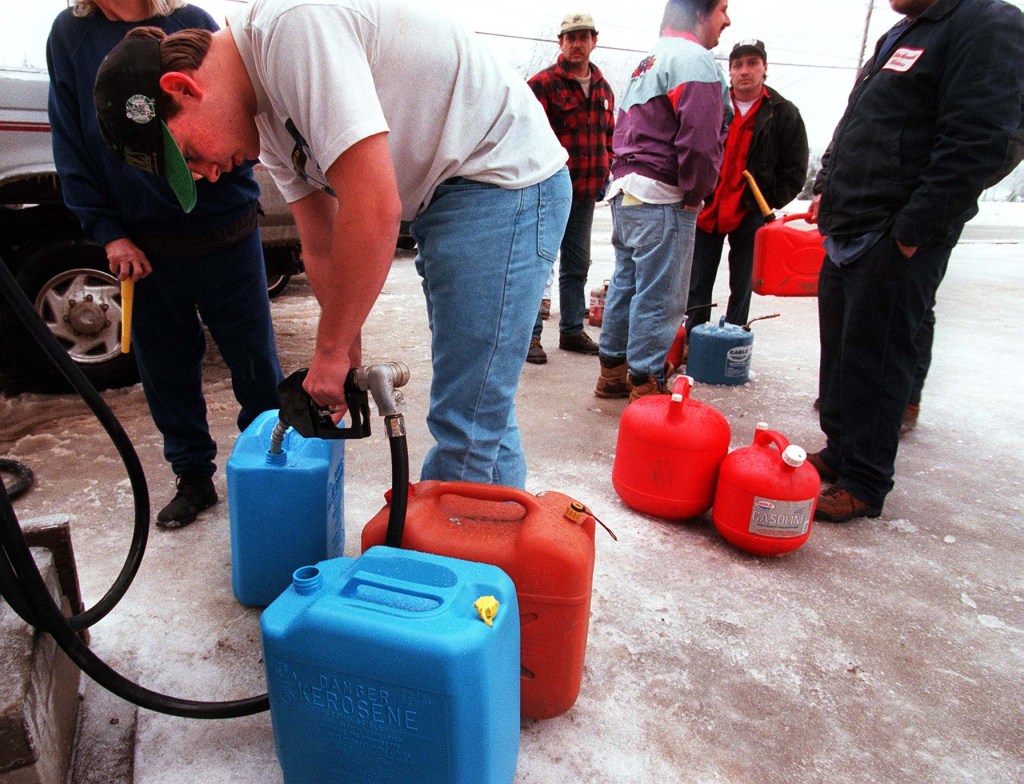
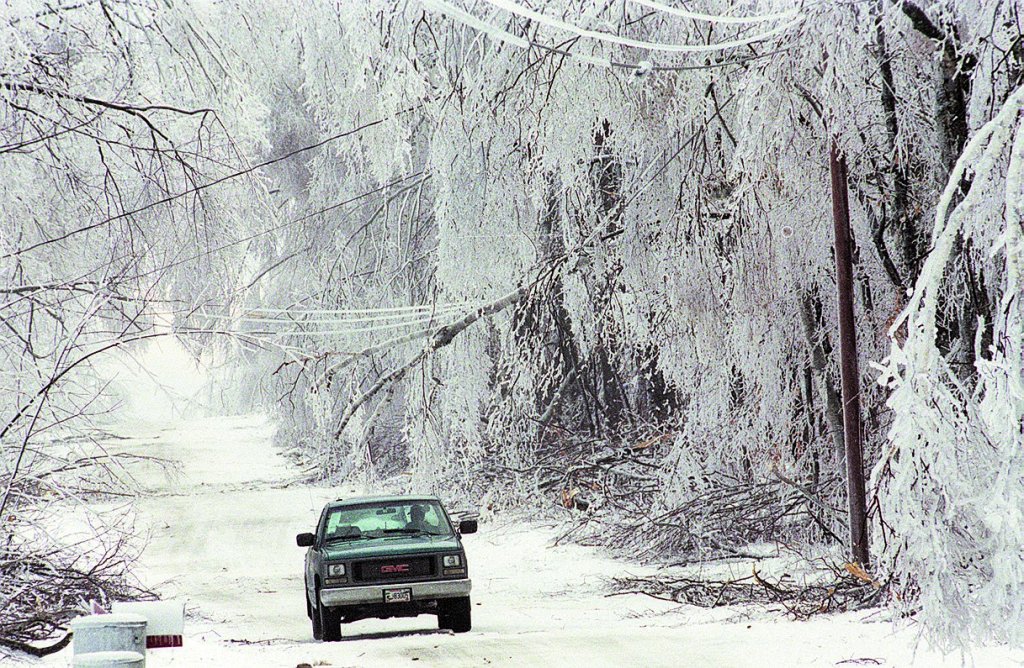
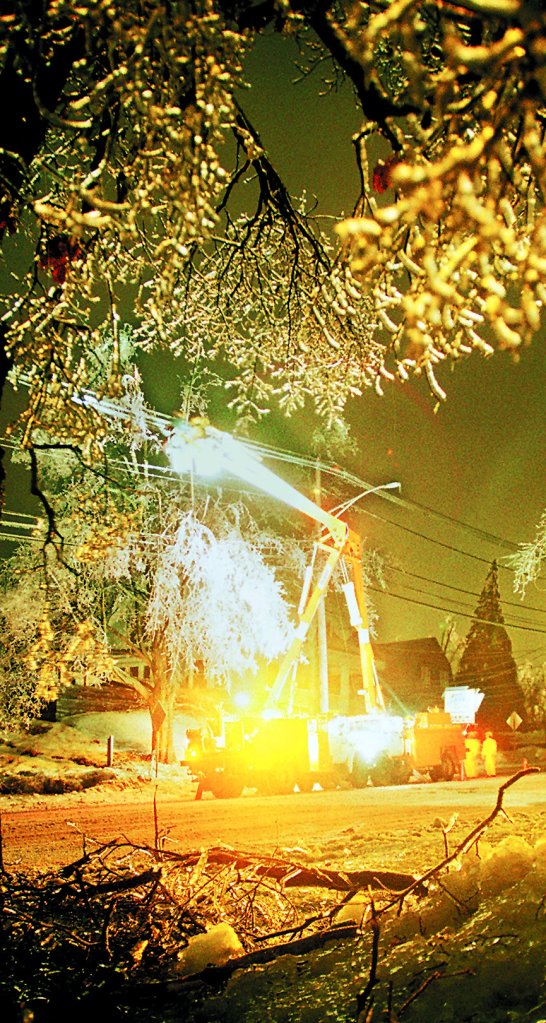
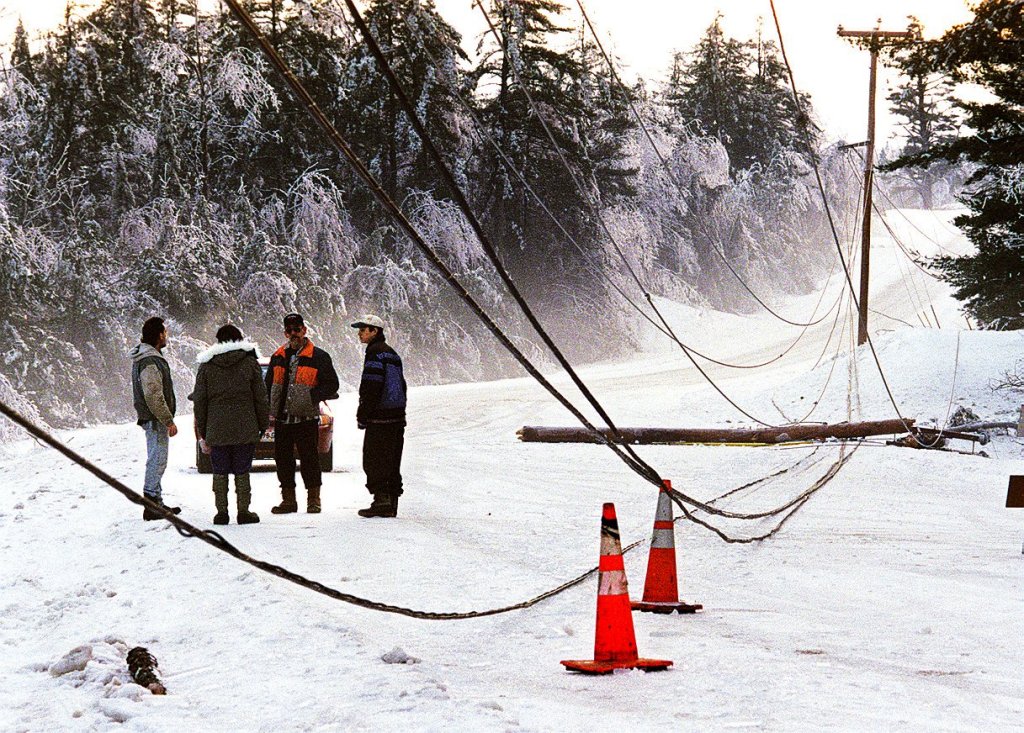
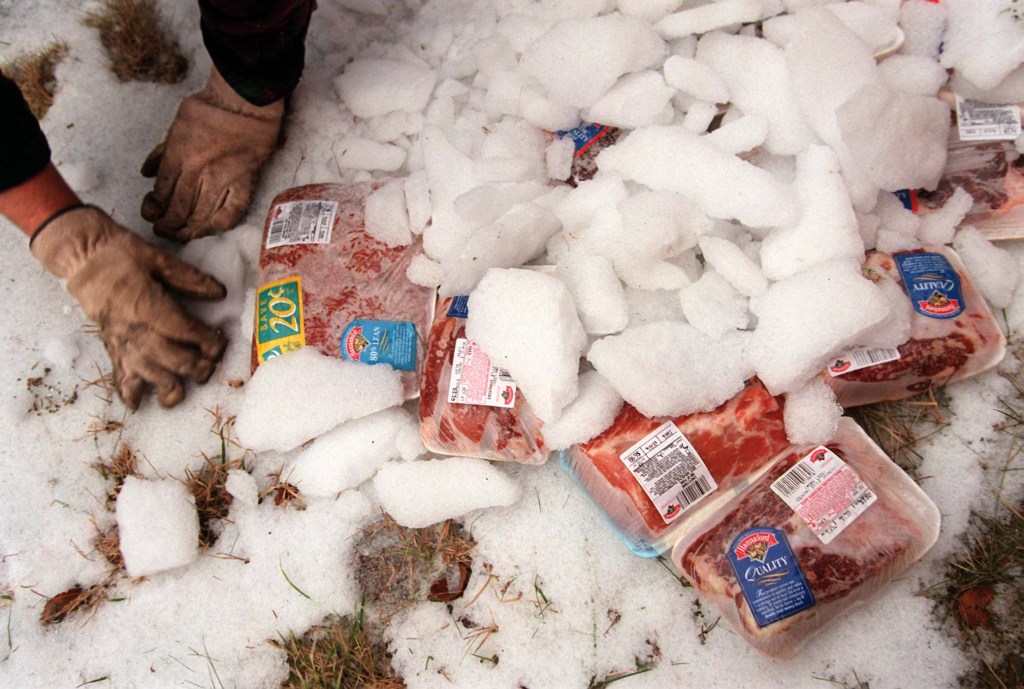
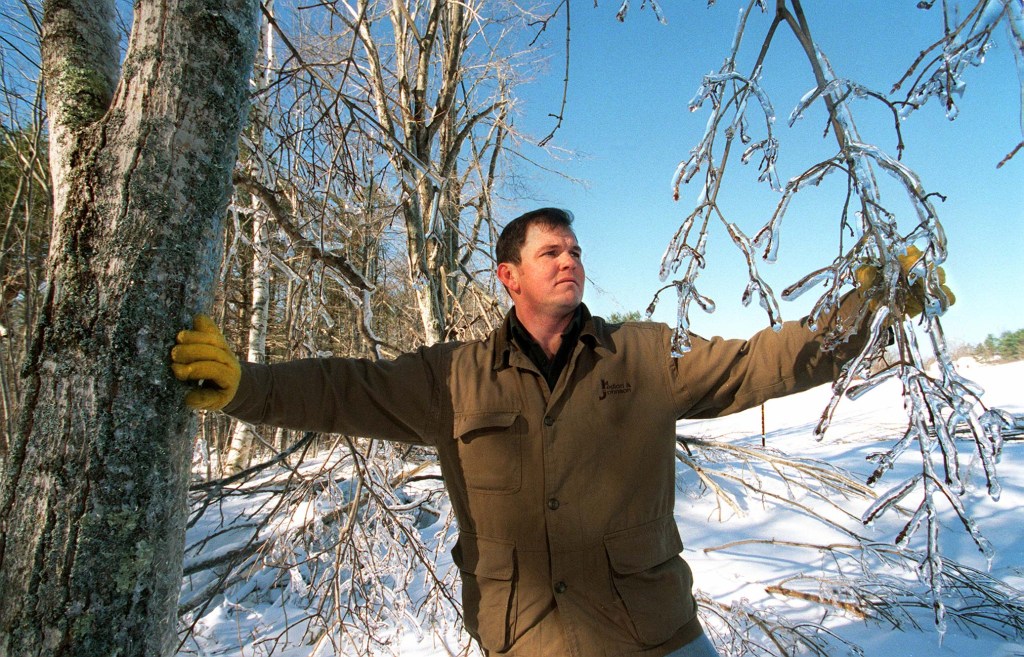
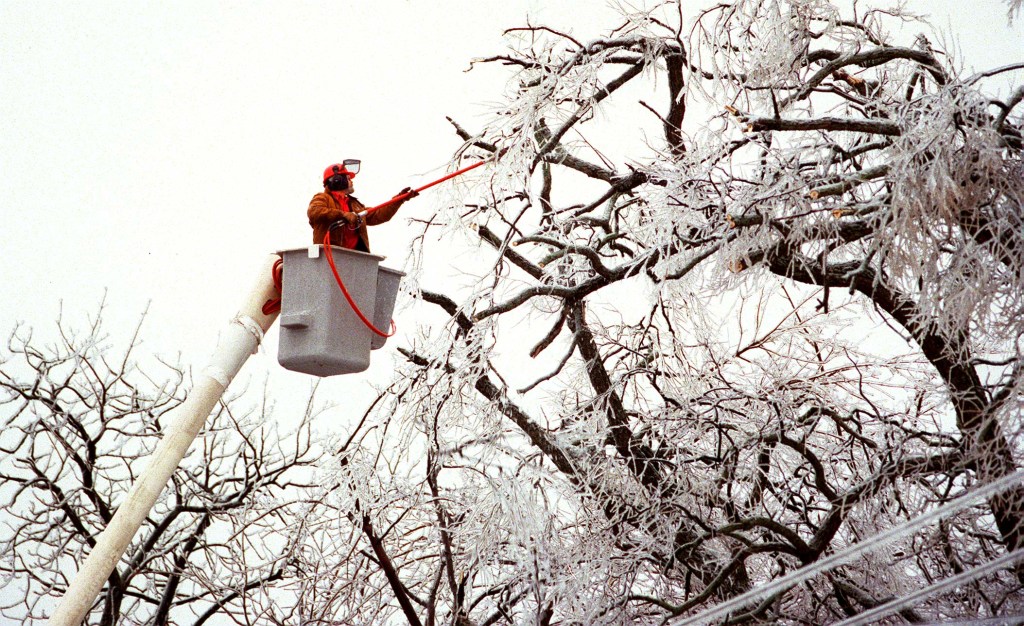
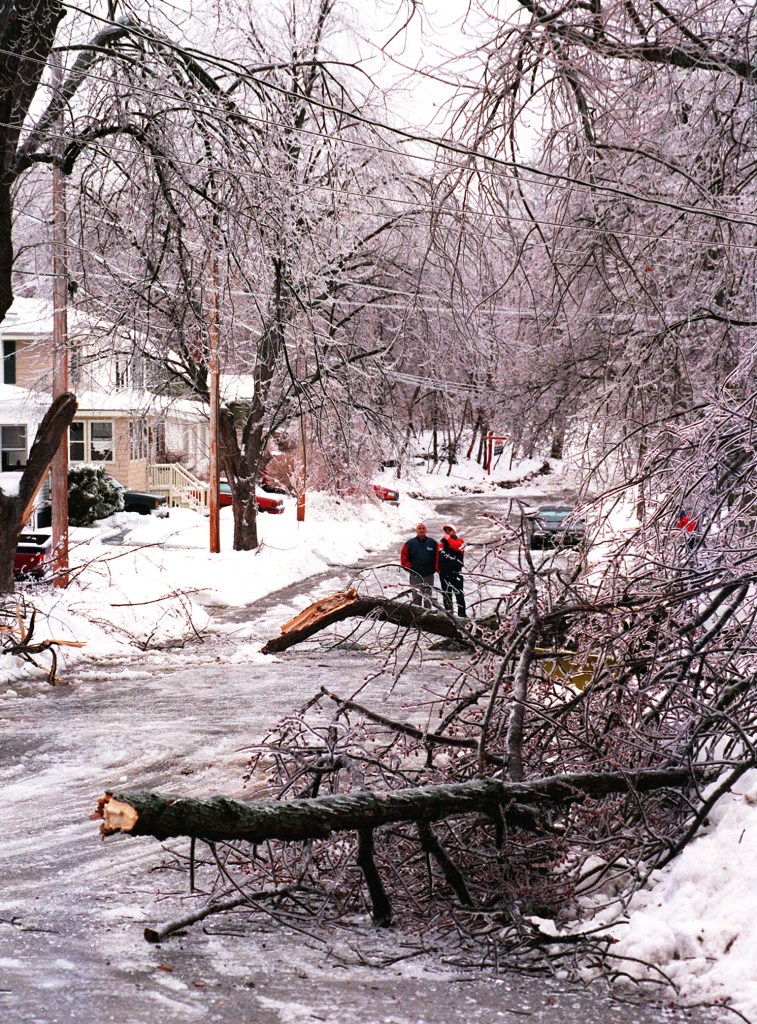

Success. Please wait for the page to reload. If the page does not reload within 5 seconds, please refresh the page.
Enter your email and password to access comments.
Hi, to comment on stories you must . This profile is in addition to your subscription and website login.
Already have a commenting profile? .
Invalid username/password.
Please check your email to confirm and complete your registration.
Only subscribers are eligible to post comments. Please subscribe or login first for digital access. Here’s why.
Use the form below to reset your password. When you've submitted your account email, we will send an email with a reset code.